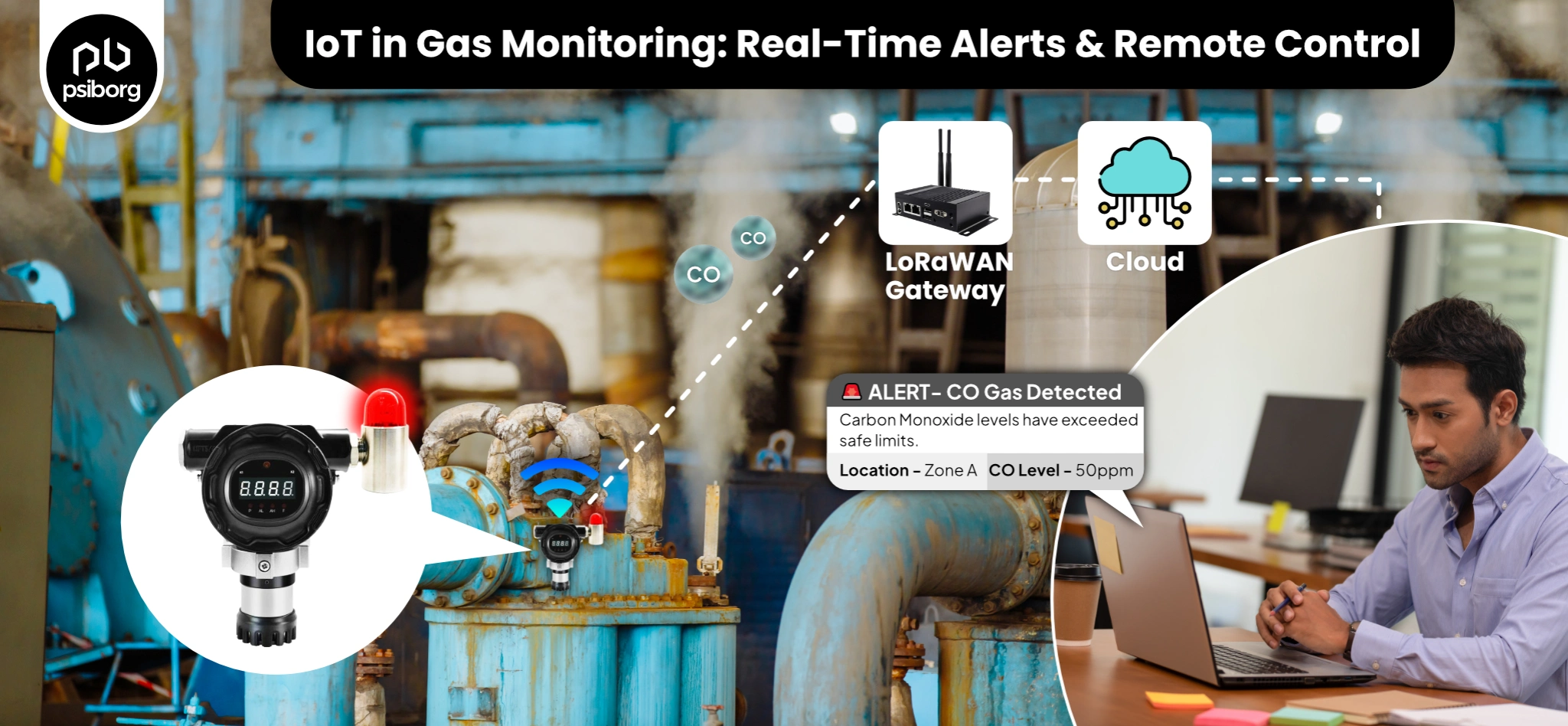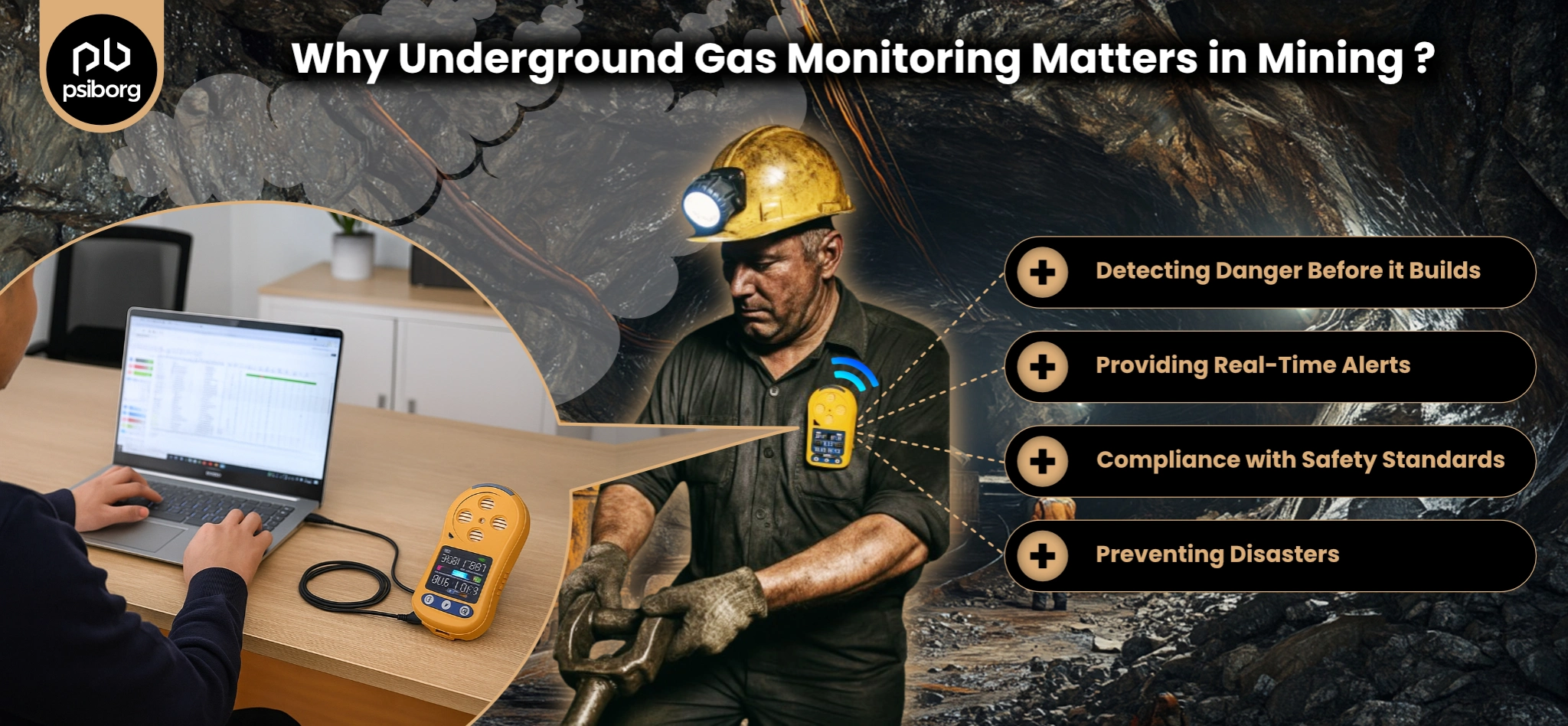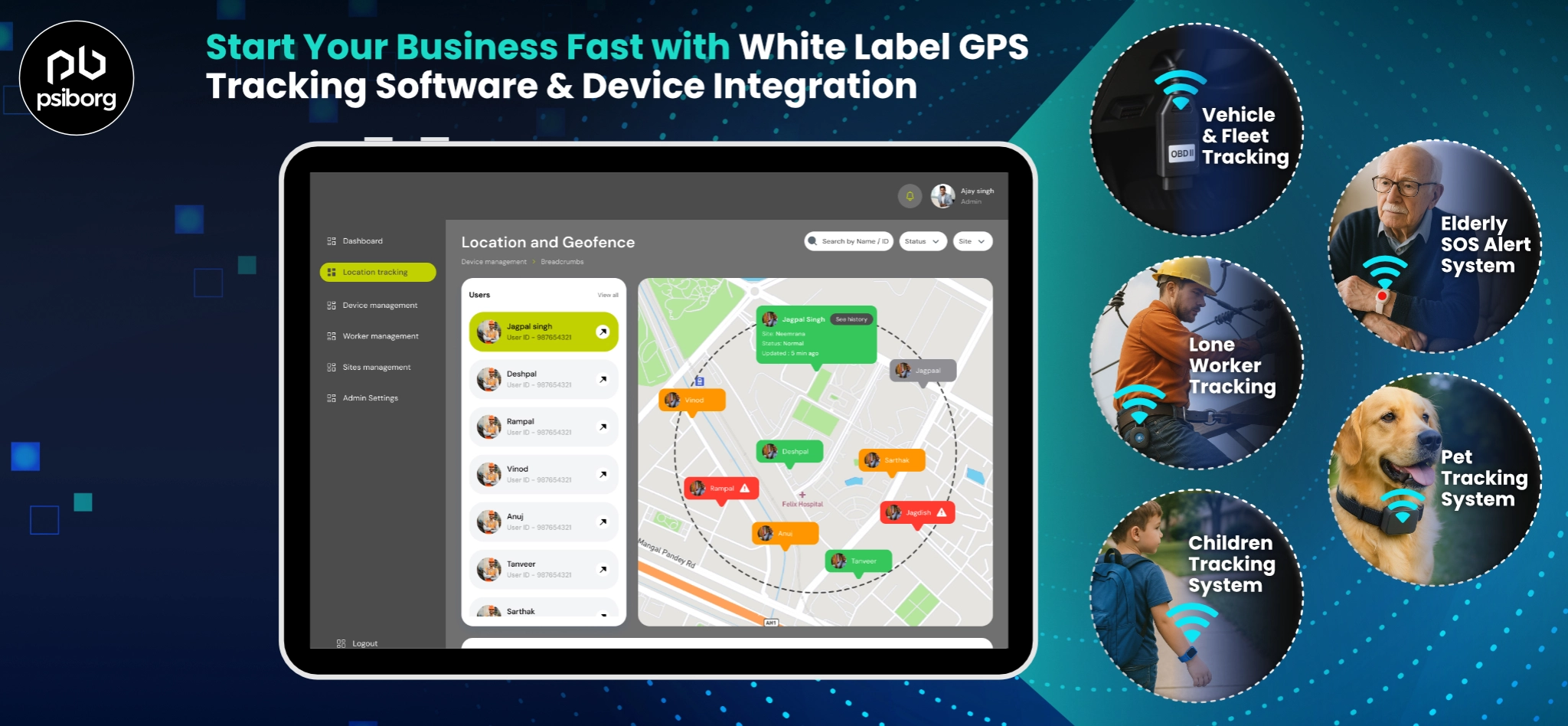To manage something properly, it’s important to monitor them. Similarly, when people are monitored, their attitude changes completely and they become more proactive.
For some, the idea of using the Internet of Things (IoT) for labour monitoring may seem contradictory. However, companies have already started to integrate the IoT on construction sites.
By using the IoT, for example, heavy machinery on the construction site is becoming smart enough to report its maintenance needs. Such smart equipment tracking offers effective ways to complete the project on time.
Do you know one of the major reasons for the failure of construction projects is the inefficiency of the labor force on the construction site?
However, the smart labor tracking and monitoring system helps manage and coordinate the workers’ tasks on the construction site. In this way, the project can be kept on schedule and a profitable business can be achieved.
PsiBorg Technologies has developed one of the best employee tracking systems that enable managers to manage the workforce effectively.
In this article, we will explain how IoT-based smart labor tracking systems can significantly impact your task of managing the construction workforce to ensure the timely and cost-effective completion of construction projects.
What is a Construction Labour Tracking System?
![]()
A site manager should always keep an eye on the productivity of the workers on site as this criterion is considered important for project execution and its timely completion.
A smart labour tracking and monitoring system not only increases output but also gives workers a sense of accomplishment and value.
An IoT-based labour tracking system for construction sites monitors and tracks employee time and total hours worked.
These smart IoT-based tracking devices automatically track employees’ activities and generate reports on their productivity and performance.
Workforce monitoring helps keep track of workers’ routine activities and job site locations during working hours without invading their privacy. The system provides real-time monitoring of workers on the job site to determine their productivity levels over time.
How Does the System Work?
The system uses a network of interconnected devices to collect and transmit data, thus providing real-time insights into worker location, activity, and even safety.
Some of the core components that the manpower tracking system includes are:
1. Wearable Tags
Workers wear tags embedded with various sensors depending on the system’s features. These can include:
- BLE Tags: For basic location tracking within the designated area.
- GPS Tags: For outdoor construction sites, allows precise location tracking.
- Health Sensors: Can monitor vital signs for fatigue detection and heat stress prevention.
- Motion Sensors: Track worker activity levels and identify idle time
2. Gateway Devices
These act as data collection points, receiving information from worker tags and transmitting it securely to a central hub. Gateways can be strategically placed around the site for optimal coverage.
3. Central Hub & Software Platform
The hub aggregates data from all the gateways and transmits it to a cloud-based software platform. This platform allows for:
- Data Visualization: Real-time dashboards displaying worker locations, activity levels, and potential safety hazards.
- Data Analysis: Generate reports on worker productivity, identify areas for improvement, and optimize labour allocation.
- Alerts & Notifications: The system can trigger alerts for situations like unauthorized zone entry, potential falls, or exceeding safe working hours.
Challenges that Companies Face in Workforce Management
There are several challenges that a company faces in managing a construction workforce and effectively tracking labours. These challenges greatly impact the project timelines, costs, and overall team efficiency.
Here are some of the major challenges that the company faces
1. Labour Shortages:
One of the main problems is finding and keeping skilled workers. The aging workforce and competition for skilled labour have resulted in a shrinking talent pool for the industry. This can lead to project delays, increased costs, and difficulty meeting project deadlines.
2. Scheduling and Communication Issues:
Construction projects are complex and involve multiple teams working together. Communication breakdowns and inefficient scheduling can lead to confusion, wasted time, and rework. One project component’s delay, for instance, causes further delays for other teams.
3. Safety Concerns:
Construction is a hazardous industry, and worker safety is important. Ensuring workers adhere to safety protocols and are aware of potential hazards requires constant vigilance and effective communication.
For individuals working alone or in remote sections of the site, lone worker tracking devices can provide essential safety features like SOS alerts and fall detection.
4. Tracking & Monitoring Challenges:
Traditionally, tracking worker activity and location on a large construction site can be difficult. Manual methods like paper timesheets and visual supervision are prone to errors and inefficiencies.
5. Under Utilization of Labor
One of the most overlooked challenges in workforce management is labor underutilization—a scenario where employees are present at the job site but not engaged in productive tasks for a significant portion of their time.
6. Lack of Data for Decision-Making:
Without real-time data on worker productivity and project progress, it’s difficult to make informed decisions about resource allocation and identify areas for improvement.
These challenges can significantly impact project outcomes. By implementing strategies like offering competitive wages and training programs to address labour shortages, using project management software for improved scheduling, and adopting IoT-based worker tracking systems, construction companies can take steps to mitigate these challenges and improve workforce management.
The labor productivity tracking Market size was valued at US$ 8.07 Bn in 2025 and is expected to reach US$ 19.94 Bn by 2032, growing at a compound annual growth rate (CAGR) of 13.8% from 2025 to 2032. Labor productivity tracking solutions are used to monitor employee activity, track time, and optimize workflow. The key growth drivers of this market include the need to improve workforce productivity, increased adoption of cloud-based solutions, and operational efficiency gains. (Source)
Features of a Construction Labor Tracking System
Now that you know how the system works, here are the features that demonstrate how the labour tracking system helps in managing the workforce at construction sites.
1. Worker Location Tracking:
- Real-time visualization of worker location on a digital map of the site.
- Identify workers in designated zones or restricted areas.
- Track worker movement patterns to optimize workflow.
2. Activity Monitoring:
- Monitor worker movements and activity levels using motion sensors.
- Identify idle time and areas for improved efficiency.
- Track progress on specific tasks and improve resource allocation.
3. Safety Management:
- Set virtual boundaries to alert workers of potential hazards like fall zones or restricted areas.
- Monitor worker vitals with biometric sensors to identify fatigue or heat stress.
- Trigger automatic alerts for emergencies or accidents.
4. Improved Timesheets and Payroll:
- Eliminate manual attendance records with automated tracking.
- Generate accurate timesheets for payroll processing.
- Ensure compliance with labor regulations by tracking overtime hours.
5. Data Analytics and Reporting:
- Generate reports on worker productivity and identify trends for improvement.
- Analyze data to optimize labor allocation and resource management.
- Identify potential delays and gain insights into the project’s progress.
Summing Up,
All things considered, a smart labour tracking system increases productivity and efficiency. Through informed decision-making, it not only improves the health and safety of the workforce but also lowers project costs.
Moreover, an IoT-based labour tracking system offers a modern approach to workforce management in the construction industry.
This aforementioned system can greatly increase productivity, safety, and cost control on builder projects by utilizing automation and data.
Businesses are constantly searching for proactive ways to improve their operations, and switching from traditional workforce management systems to IoT-based labour tracking systems is one such proactive measure.
Leverage PsiBorg Technologies IoT expertise to get the best labour tracking and monitoring system.
At PsiBorg, we develop easy-to-use and affordable asset tracking devices for businesses that want to bring change to the industry.
Let us know, what features you want in your labour tracking system, and we will build a customized solution for you. Also, check our success story on manpower and trolley tracking in automotive industries and ble beacon-based crowd management systems to learn about our already deployed solutions.
Thank you for reading!
FAQs
Labour tracking or manpower tracking is the process of tracking and monitoring the employee’s work hours, location, tasks, health status, and productivity. Integrating a labour tracking and monitoring system in construction operations improves workforce management, helps maintain compliance with labour regulations, and ensures timekeeping.
The most accurate way of tracking labour hours is through using an IoT-based manpower tracking system. The system employs sensors and devices to automatically log hours worked. It offers real-time monitoring by eliminating manual errors and gets seamlessly integrated with the payroll systems.
Businesses need labour tracking to efficiently manage project timelines, keep an eye on worker productivity, distribute resources, and make sure payroll is accurate. It increases efficiency, enables better decision-making, and facilitates compliance with labor laws and regulations.





